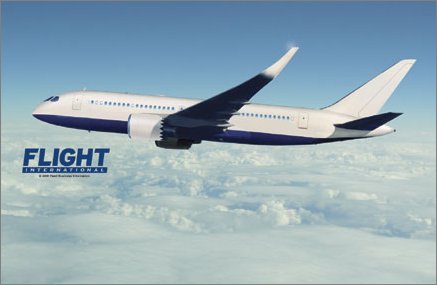Aircraft sizes under examination indicate US manufacturer’s growing interest in penetrating regional market
Boeing has split its 737 Replacement Study (737RS) into two main categories, including one in the 90- to 100-seat range, and is targeting an engine decision as early as the first quarter of 2008 as it focuses in on a launch decision later that year to allow service entry in 2012.
Although Boeing is tight-lipped about its product-development work, the decision to cluster 737RS studies around the standard 150-seat and smaller 90- to 100-seat ranges indicates growing interest in potential penetration of the regional market as well as the baseline Airbus A320/Boeing 737 mid-range market. Few firm details are known about either study, but initial reviews indicate that common six-abreast cross sections, 787 technology and all-composite fuselage structures may be adopted.
Although Boeing acknowledged in 2005 that the scope of its 737-successor studies could extend down to 100 seats and below, the main focus up until now has been thought to be in the 150-seat range, which includes a series of traditional 737-sized variants ranging from the 120-seat mark up to the sub-787-3 range at close to 200 seats (a Flight International artist's impression of which is pictured below).

It is not known what impact the divergent studies could have on the engine makers, which, up until now, have been equally focused on the 25,000-35,000lb thrust (110-155kN) range more suitable for the larger models.
News of the two-pronged evaluation comes as Boeing names its initial planning team to steer the 737RS effort. The Seattle Times revealed that the Boeing internal website names Mike Cave, vice-president for airplane programmes, as the leader of the project with Carolyn Brandsema appointed to head aircraft and production system studies. Others named include Kent Fisher, a Commercial Airplanes marketing vice-president, who will head business development, Don Moon as programme management specialist, and Ron Wheeler to study programme costs.
Boeing confirms the appointments, but denies the disclosure represents any sort of increase in tempo of 737RS activity. “This is not a sign to the world that something has massively changed. It doesn’t do anything to change the hypothetical timescale we’ve put out there. The aircraft might enter service between 2012 and 2015. The basic problem we have is we cannot figure out today what it will take to replace the 737 given that aircraft’s performance, reliability and the cost structure around it. We don’t see immediately today what will push it out of the marketplace. We know one day something will and we want to be the producers of that aircraft, but we don’t yet see a value proposition for it.”
Boeing adds that the new group will work alongside and not displace the traditional product development team under vice-president Dan Mooney that has so far led the 737RS/Yellowstone 1 study work. “It’s a way of providing more of a focus, and it is more of an administrative convenience for us.” The company adds that the news was aimed at “our internal audience”.
GUY NORRIS / LOS ANGELES
For more on Pratt & Whitney's plans for the geared turbofan engine, read out special feature.
Source: Flight International



















